-
 Bitcoin
Bitcoin $107,341.7259
0.15% -
 Ethereum
Ethereum $2,438.6204
0.70% -
 Tether USDt
Tether USDt $1.0003
-0.02% -
 XRP
XRP $2.1866
1.94% -
 BNB
BNB $649.0952
0.36% -
 Solana
Solana $150.9602
5.63% -
 USDC
USDC $0.9999
0.00% -
 TRON
TRON $0.2742
0.40% -
 Dogecoin
Dogecoin $0.1645
1.93% -
 Cardano
Cardano $0.5669
1.18% -
 Hyperliquid
Hyperliquid $37.8286
4.19% -
 Bitcoin Cash
Bitcoin Cash $491.4669
-2.74% -
 Sui
Sui $2.8150
3.06% -
 Chainlink
Chainlink $13.4184
2.91% -
 UNUS SED LEO
UNUS SED LEO $9.0809
0.27% -
 Avalanche
Avalanche $18.0295
2.60% -
 Stellar
Stellar $0.2396
1.19% -
 Toncoin
Toncoin $2.8587
0.13% -
 Shiba Inu
Shiba Inu $0.0...01160
2.59% -
 Litecoin
Litecoin $86.4192
1.45% -
 Hedera
Hedera $0.1486
1.19% -
 Monero
Monero $308.4324
0.87% -
 Polkadot
Polkadot $3.4202
1.43% -
 Bitget Token
Bitget Token $4.6436
-0.34% -
 Dai
Dai $0.9998
-0.02% -
 Ethena USDe
Ethena USDe $1.0002
0.00% -
 Uniswap
Uniswap $7.1527
3.29% -
 Pi
Pi $0.5357
-8.45% -
 Pepe
Pepe $0.0...09588
4.61% -
 Aave
Aave $259.9759
0.81%
What is the Metaverse? How does it relate to cryptocurrency?
The Metaverse, a persistent, interconnected 3D virtual world, leverages cryptocurrencies for secure transactions and NFT-based asset ownership, with DAOs enabling decentralized governance; however, scalability and security remain key challenges.
Mar 03, 2025 at 03:36 pm
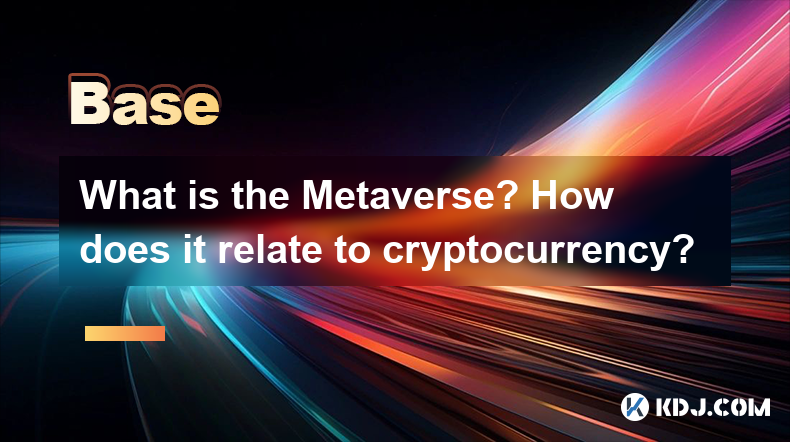
Key Points:
- The Metaverse is a persistent, shared, 3D virtual world accessible through the internet. It's not a single platform, but a collection of interconnected virtual spaces.
- Cryptocurrencies play a crucial role in the Metaverse economy, facilitating transactions, asset ownership, and governance.
- NFTs (Non-Fungible Tokens) are central to Metaverse ownership, representing unique digital assets like land, avatars, and virtual items.
- Decentralized Autonomous Organizations (DAOs) are emerging as governance mechanisms within Metaverse projects.
- Security and scalability remain significant challenges for the Metaverse and its integration with cryptocurrencies.
What is the Metaverse? How does it relate to cryptocurrency?
The term "Metaverse" describes a persistent, shared, 3D virtual world accessible through the internet. Imagine a constantly evolving, interconnected network of virtual environments where users can interact with each other, participate in activities, and build virtual economies. It's not a single platform like Second Life, but rather a vision of a collective, interoperable digital realm. This vision encompasses various technologies, including VR/AR headsets, blockchain technology, and 3D modeling software. The experience is intended to be immersive and engaging, transcending the limitations of the physical world.
The relationship between the Metaverse and cryptocurrency is deeply intertwined. Cryptocurrencies provide the underlying infrastructure for many envisioned Metaverse functionalities. Without crypto, the seamless transactions, secure asset ownership, and decentralized governance models that define many Metaverse concepts wouldn't be possible.
One crucial aspect of this relationship is the use of NFTs (Non-Fungible Tokens). NFTs act as verifiable proof of ownership for unique digital assets within the Metaverse. These assets can include virtual land, avatars, in-game items, digital art, and more. Owning an NFT gives you exclusive rights to that digital asset, which can be traded or used within the Metaverse ecosystem. The value of these NFTs is determined by market demand and scarcity, mirroring the behavior of real-world assets.
Beyond NFTs, cryptocurrencies themselves act as the medium of exchange within Metaverse economies. Users can buy, sell, and trade virtual goods and services using various cryptocurrencies, fostering a dynamic virtual marketplace. This decentralized financial system, often built on blockchain technology, provides transparency and security to transactions, reducing reliance on centralized intermediaries.
Decentralized Autonomous Organizations (DAOs) are another critical element connecting the Metaverse and cryptocurrency. DAOs use smart contracts to automate decision-making processes within Metaverse projects. This allows for community-driven governance, giving users a direct say in the development and direction of the virtual worlds they inhabit. Token holders often have voting rights on various aspects of the Metaverse platform, promoting transparency and user empowerment.
However, challenges remain. Scalability is a significant concern. Handling a massive influx of users and transactions simultaneously requires robust infrastructure capable of managing high volumes of data and maintaining transaction speeds. Security is another paramount issue. The decentralized nature of cryptocurrencies and the Metaverse makes them vulnerable to hacking and fraud. Robust security measures, including strong encryption and multi-factor authentication, are crucial to protecting user assets and data. Furthermore, regulatory uncertainty poses a significant obstacle to the widespread adoption of Metaverse projects and their integration with cryptocurrencies. Governments worldwide are still grappling with how to regulate this rapidly evolving space.
The interoperability of different Metaverse platforms is also a crucial consideration. The vision of a truly interconnected Metaverse requires seamless communication and asset transfer between various virtual worlds. Achieving this interoperability is a complex technical challenge that requires collaboration among different platforms and developers.
Many projects are exploring various approaches to addressing these challenges. Layer-2 scaling solutions aim to improve the transaction speed and reduce the cost of transactions on existing blockchains. Advanced security protocols are being developed to enhance the security of digital assets and protect against hacking attempts. Industry-wide standards are being discussed to foster interoperability between different Metaverse platforms.
Frequently Asked Questions:
Q: Is the Metaverse only accessible through VR headsets?
A: No, while VR headsets offer an immersive experience, the Metaverse can also be accessed through computers, smartphones, and other devices. The level of immersion varies depending on the device used.
Q: Are all Metaverse projects built on blockchain technology?
A: No, while blockchain technology plays a significant role in many Metaverse projects, some are built using centralized architectures. The use of blockchain often dictates the level of decentralization and user ownership within the platform.
Q: How can I participate in a Metaverse economy?
A: You can participate by purchasing NFTs, trading cryptocurrencies within Metaverse platforms, creating and selling virtual goods and services, or participating in DAOs governing various aspects of the Metaverse.
Q: What are the risks associated with investing in Metaverse projects?
A: The Metaverse is a relatively new and rapidly evolving space. There are risks associated with the volatility of cryptocurrency markets, potential security breaches, regulatory uncertainty, and the possibility of project failure. Thorough research and due diligence are essential before investing.
Q: Is the Metaverse just a fad, or is it here to stay?
A: Whether the Metaverse will achieve its full potential remains to be seen. However, the underlying technologies are continuously improving, and major companies are investing heavily in this space. Its long-term viability will depend on its ability to overcome the current challenges and deliver on its promises of immersive experiences and decentralized ownership.
Disclaimer:info@kdj.com
The information provided is not trading advice. kdj.com does not assume any responsibility for any investments made based on the information provided in this article. Cryptocurrencies are highly volatile and it is highly recommended that you invest with caution after thorough research!
If you believe that the content used on this website infringes your copyright, please contact us immediately (info@kdj.com) and we will delete it promptly.
- Ruvi AI: The Audited Token Primed to Lead the Bull Run, Outshining Competitors
- 2025-06-29 06:30:13
- Ruvi AI: The Smart Shiba Inu? Token Rally Potential Examined
- 2025-06-29 06:30:13
- Bitcoin, AI Tokens, and Ruvi AI: What's the Deal?
- 2025-06-29 06:50:12
- Cryptos with Real-World Utility and Growth Potential: Qubetics and Beyond
- 2025-06-29 06:35:13
- Bitcoin Breakout Imminent: Institutional Demand Fuels the Fire
- 2025-06-29 07:30:13
- Ruvi AI, Dogecoin, and ROI: Decoding the Crypto Hype
- 2025-06-29 07:12:05
Related knowledge
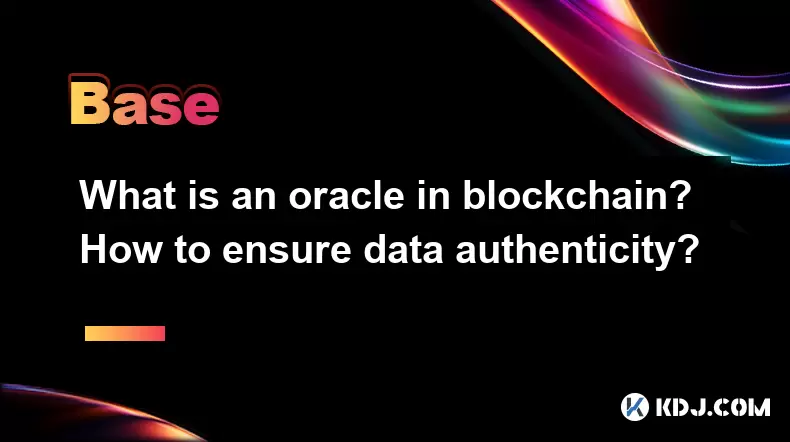
What is an oracle in blockchain? How to ensure data authenticity?
Jun 19,2025 at 08:49pm
Understanding the Role of an Oracle in BlockchainIn the context of blockchain technology, an oracle serves as a bridge between the blockchain and external data sources. While blockchains are inherently secure and decentralized, they cannot access real-world information on their own. Oracles enable smart contracts to interact with off-chain data such as ...
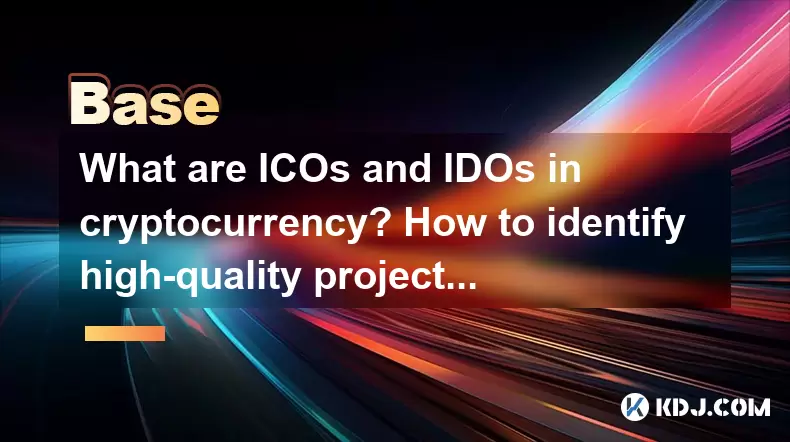
What are ICOs and IDOs in cryptocurrency? How to identify high-quality projects?
Jun 22,2025 at 11:49am
Understanding ICOs in CryptocurrencyInitial Coin Offerings (ICOs) are fundraising mechanisms used by cryptocurrency startups to raise capital for their projects. In an ICO, a company creates and sells its own tokens to investors in exchange for established cryptocurrencies like Bitcoin or Ethereum. The process typically involves the release of a whitepa...
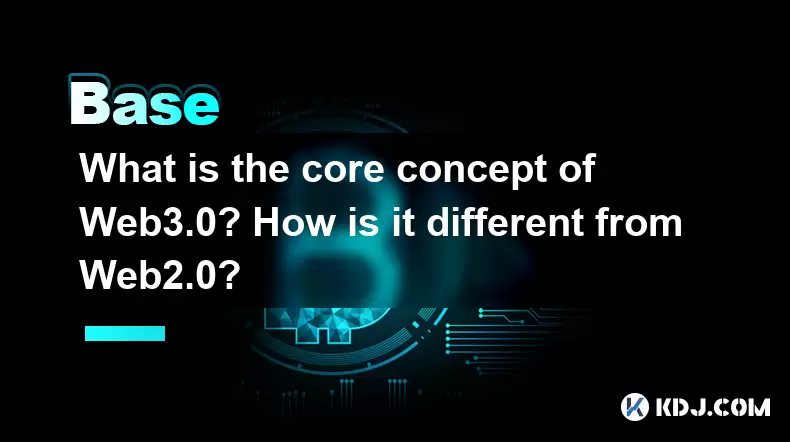
What is the core concept of Web3.0? How is it different from Web2.0?
Jun 21,2025 at 05:56pm
Decentralization as the Foundation of Web3.0The core concept of Web3.0 revolves around decentralization, which fundamentally challenges the centralized architecture of Web2.0. In Web3.0, control and ownership are distributed across a network rather than being held by a central authority or corporation. This is achieved primarily through blockchain techn...
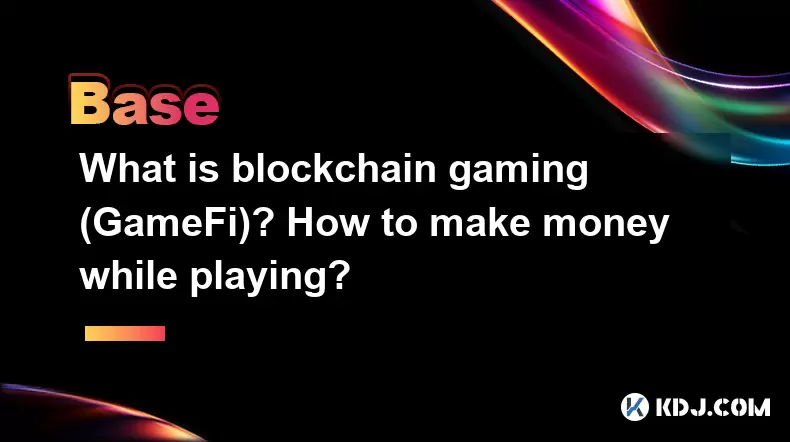
What is blockchain gaming (GameFi)? How to make money while playing?
Jun 20,2025 at 07:56am
Understanding Blockchain Gaming (GameFi)Blockchain gaming, often referred to as GameFi, is a fusion of blockchain technology and video games. It enables players to own in-game assets through non-fungible tokens (NFTs) and earn rewards via cryptocurrencies or token-based systems. Unlike traditional games where items are controlled by centralized develope...
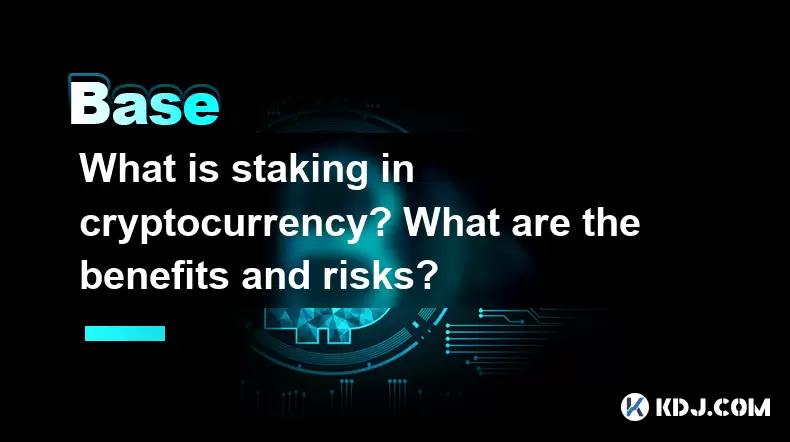
What is staking in cryptocurrency? What are the benefits and risks?
Jun 22,2025 at 10:01am
Understanding the Concept of Staking in CryptocurrencyStaking in cryptocurrency refers to the process of actively participating in transaction validation on a blockchain network that uses a Proof-of-Stake (PoS) consensus mechanism. Instead of miners competing to solve complex mathematical puzzles as in Proof-of-Work systems like Bitcoin, PoS blockchains...
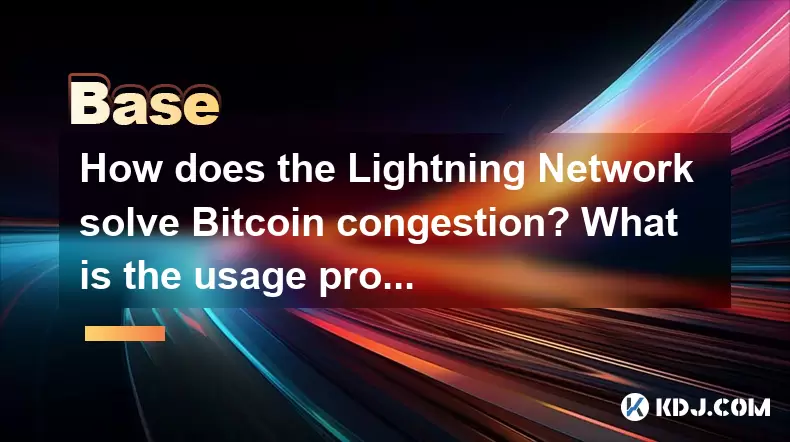
How does the Lightning Network solve Bitcoin congestion? What is the usage process?
Jun 23,2025 at 06:21pm
Understanding Bitcoin Network CongestionBitcoin, as a decentralized digital currency, operates on a blockchain that records every transaction in a public ledger. Each block has a limited size, typically 1 megabyte, which allows for only a certain number of transactions per second (TPS). When the number of transactions increases, the network becomes cong...

What is an oracle in blockchain? How to ensure data authenticity?
Jun 19,2025 at 08:49pm
Understanding the Role of an Oracle in BlockchainIn the context of blockchain technology, an oracle serves as a bridge between the blockchain and external data sources. While blockchains are inherently secure and decentralized, they cannot access real-world information on their own. Oracles enable smart contracts to interact with off-chain data such as ...

What are ICOs and IDOs in cryptocurrency? How to identify high-quality projects?
Jun 22,2025 at 11:49am
Understanding ICOs in CryptocurrencyInitial Coin Offerings (ICOs) are fundraising mechanisms used by cryptocurrency startups to raise capital for their projects. In an ICO, a company creates and sells its own tokens to investors in exchange for established cryptocurrencies like Bitcoin or Ethereum. The process typically involves the release of a whitepa...

What is the core concept of Web3.0? How is it different from Web2.0?
Jun 21,2025 at 05:56pm
Decentralization as the Foundation of Web3.0The core concept of Web3.0 revolves around decentralization, which fundamentally challenges the centralized architecture of Web2.0. In Web3.0, control and ownership are distributed across a network rather than being held by a central authority or corporation. This is achieved primarily through blockchain techn...

What is blockchain gaming (GameFi)? How to make money while playing?
Jun 20,2025 at 07:56am
Understanding Blockchain Gaming (GameFi)Blockchain gaming, often referred to as GameFi, is a fusion of blockchain technology and video games. It enables players to own in-game assets through non-fungible tokens (NFTs) and earn rewards via cryptocurrencies or token-based systems. Unlike traditional games where items are controlled by centralized develope...

What is staking in cryptocurrency? What are the benefits and risks?
Jun 22,2025 at 10:01am
Understanding the Concept of Staking in CryptocurrencyStaking in cryptocurrency refers to the process of actively participating in transaction validation on a blockchain network that uses a Proof-of-Stake (PoS) consensus mechanism. Instead of miners competing to solve complex mathematical puzzles as in Proof-of-Work systems like Bitcoin, PoS blockchains...

How does the Lightning Network solve Bitcoin congestion? What is the usage process?
Jun 23,2025 at 06:21pm
Understanding Bitcoin Network CongestionBitcoin, as a decentralized digital currency, operates on a blockchain that records every transaction in a public ledger. Each block has a limited size, typically 1 megabyte, which allows for only a certain number of transactions per second (TPS). When the number of transactions increases, the network becomes cong...
See all articles

























































































